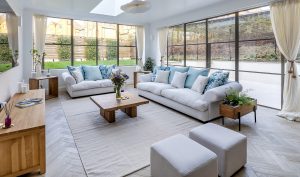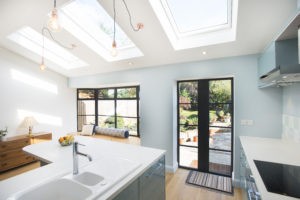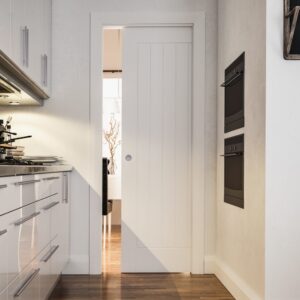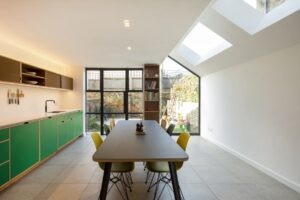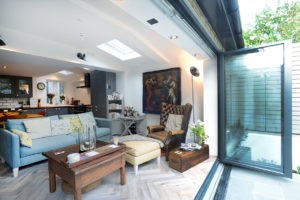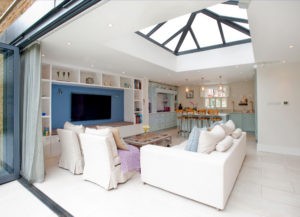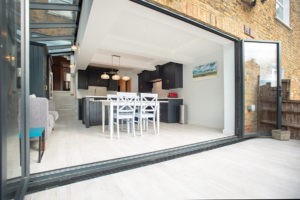Biophilic design has become increasingly popular in recent years as more of us seek to connect with nature. The trend is fuelled by several factors, like our rapid technological growth, a greater focus on sustainability and a deeper understanding of how being in nature benefits our health. Natural elements can lower stress levels, reduce blood pressure and lower heart rate, at the same time providing mental health benefits like boosting our mood and raising productivity. Plus, after spending so much time indoors in Covid times has further highlighted the importance of integrating nature into our lives.
So, how can you enjoy the benefits of biophilic design in your home? Here are some practical and creative ways to infuse nature into your living space.
What is Biophilic Design?
The term ‘biophilia’ means a desire to be close to or interact with nature. In design & architecture terms, it means bringing natural elements and patterns into your home to create a connection between indoor and outdoor. It focuses on incorporating natural elements such as light, plants, colour and natural materials into living spaces. This approach is grounded in the belief that humans have an inherent connection to nature, and that incorporating these elements into our environment can improve our physical and mental health.

Here are some ways you can incorporate the trend into your home:
Indoor Plants
Bringing plants into your home is one of the simplest and most effective ways to incorporate biophilic design. They not only enhance aesthetics but also purify the air and improve humidity levels. Studies also show that indoor plants can reduce stress, boost productivity and promote overall wellbeing.
Consider choosing a variety of plants to create and dynamic and engaging environment. Large statement plants like fiddle leaf figs can serve as stunning focal points, while smaller potted plants like succulents or herbs can add life to countertops or windowsills. Hanging plants such as spider plants are perfect for adding greenery without taking up floor space, making them ideal for kitchens and bathrooms.
Grouping plants together can create lush, green corners that mimic natural environments, enhancing the biophilic effect. If you’re short on space, consider vertical gardens or living walls. These installations provide an abundance of greenery without taking up much room.
Unite Indoor with Outdoor
Creating a seamless connection between your indoor and outdoor spaces is a key aspect of biophilic design. Start with blurring the lines between inside and outside in your architecture and glazing. Architecturally, this can be achieved through a carefully planned extension designed to maximise natural light and views. Try floor-to-ceiling windows and sliding doors that offer unobstructed views of your garden or patio. When open, these doors can transform your kitchen into a breezy, open-air living space. You can maximise these effects by using the same flooring in your kitchen and patio, or by bringing elements of your indoors into your garden such as fairy lights or decorative cushions to encourage seamless transition.
If you don’t have outdoor space, try increasing your windows, implementing internal windows and doors or installing skylights to maximise views of the outdoors and help create this connection. Statement glazing such as skylights or heritage doors can open up your interior and increase the amount of natural light through your home, a natural mood-booster and energiser.
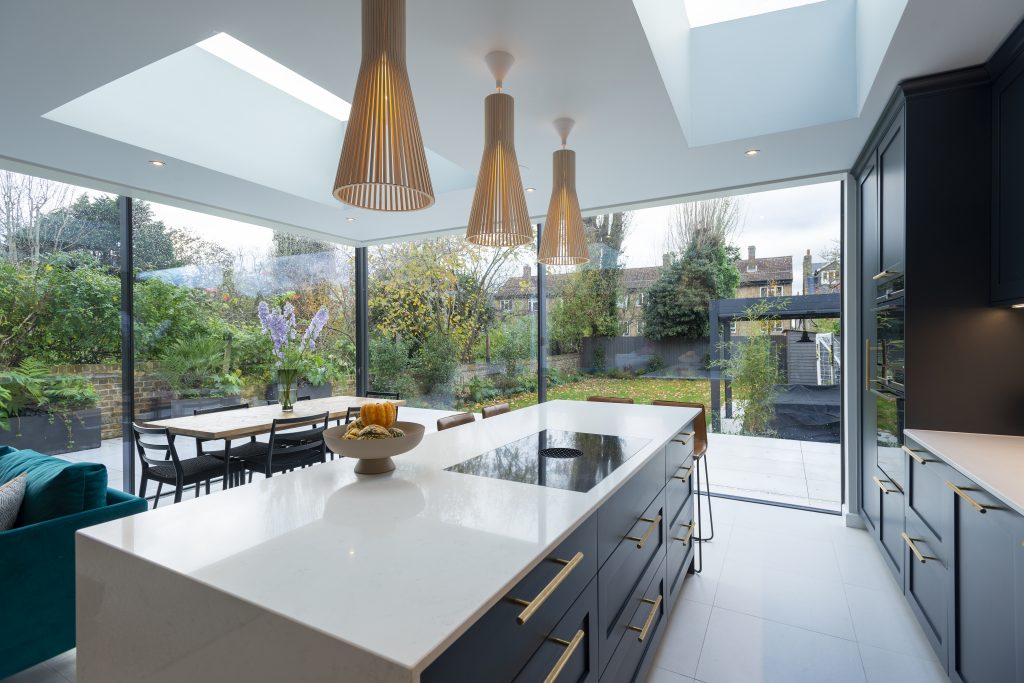
Natural Elements
One of the most effective ways of creating biophilic interiors is to use natural materials and a nature-inspired colour palette. Start with the basics by choosing wood, stone, leather and other natural materials for flooring, furniture and accents.
When it comes to colours, opt for an earthy palette inspired by nature. Think shades of green, brown, beige, soft blues and even sunset-inspired pinks and oranges. These colours are not only soothing but also make your space feel more connected to the outdoors. Incorporate these tones through wall paint, rugs, pillows and artwork. Additionally, using natural materials like cotton, wool and linen for upholstery, curtains and rugs can add texture and warmth to your home.
Organic Shapes
Incorporating organic shapes into your home design is a great way to mimic the fluid and dynamic forms found in nature. Unlike rigid, geometric shapes, organic forms are more natural and free flowing, creating a sense of movement and softness in your space. Look for furniture and decor items with curved lines and abstract forms, such as round coffee tables or sculptural vases. Even subtle touches, like choosing cushions or rugs with flowing designs can introduce these calming, nature-inspired shapes. By embracing organic shapes, you can make your home feel more relaxed and in tune with the natural world.
You can also introduce natural shapes into your home’s architecture for a more profound impact. Consider features like arched doorways, curved walls or rounded windows to break away from traditional, straight-edged designs. A spiral staircase or a dome ceiling can add dramatic flair while maintain a natural, flowing aesthetic. Built-in niches and alcoves with gentle curves can provide cosy nooks and add architectural interest. These elements not only create a unique and inviting space but also evoke the effortless shapes found in nature, making your home feel more connected to the natural world.
Mismatch & Variation
One of the joys of biophilic design is the freedom to mix and match furniture pieces to create a more eclectic and lived-in look. Nature itself is full of diversity and variation, so don’t be afraid to combine different styles, textures and colours in your home. Mix wood, metal and fabric pieces to add depth and character. Try incorporating a variety of heights and scales into your home as well, whether this is in the architecture or through your furniture placement. This approach not only makes your home more interesting but also reflects the natural world’s variety and imperfections.
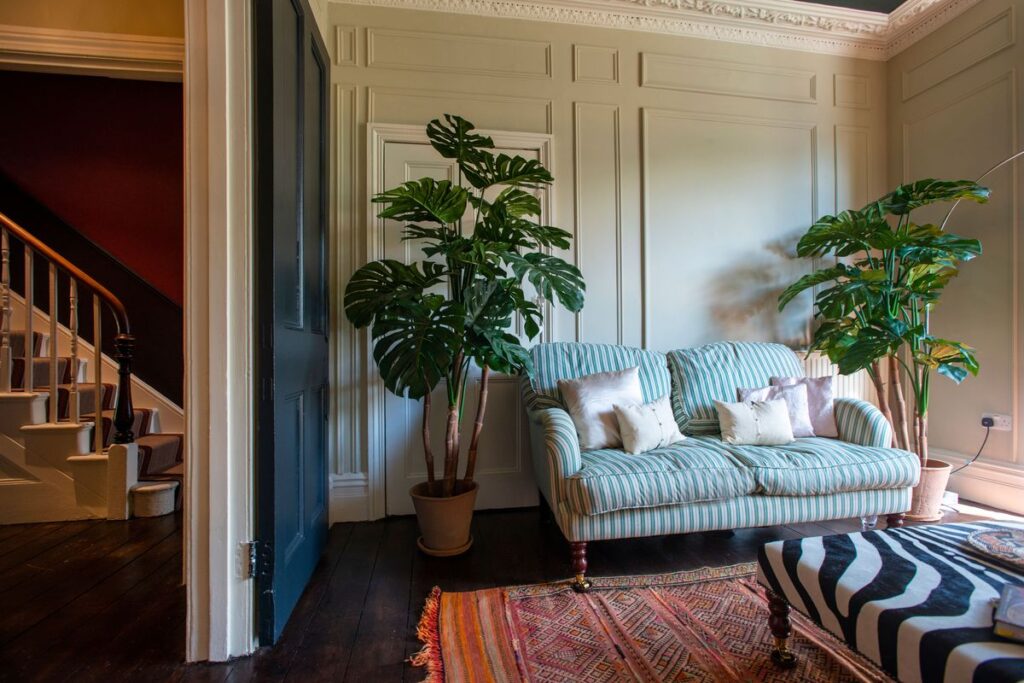
Natural Design Features
Bringing nature indoors can also be achieved through artwork and water features. Nature-inspired artwork, such as paintings of landscapes, botanical prints or photographs of natural scenes can significantly enhance the biophilic ambiance of your home.
Additionally, incorporating water features such as indoor fountains or tabletop waterfalls can add a soothing auditory element and create a calming atmosphere. By integrating natural artwork and water features, you can enrich your living space with the tranquillity and beauty of the outdoors.
Introducing biophilic design into your home is a fantastic way to create a living space that promotes health, well-being and a deeper connection to nature. From maximising natural light to using natural materials and organic shapes, there are countless ways to bring the calming and rejuvenating effects of the outdoors inside.


